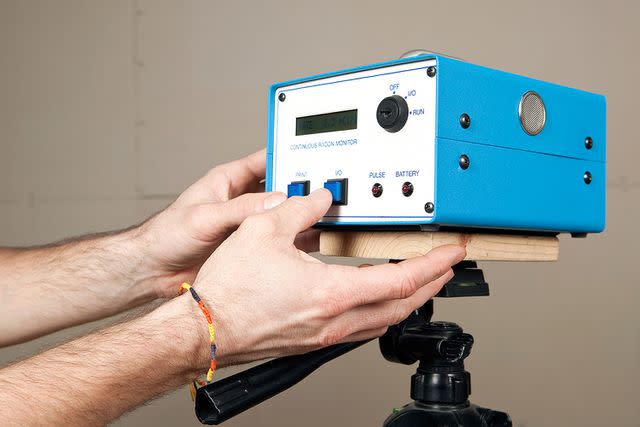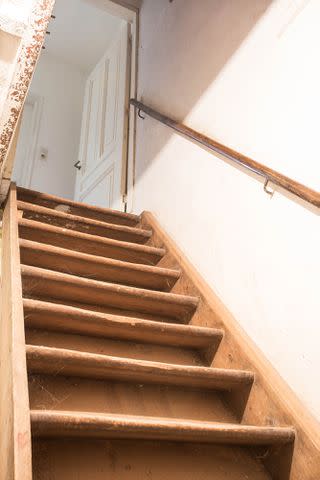A Leading Cause of Lung Cancer Could Be Hidden in Your Home
The second leading cause of lung cancer behind smoking could be lurking in your home — but 75% of Americans haven’t tested for it

Getty
Stock image of a suburban home.Most Americans haven’t had their homes tested for the presence of radon, an odorless gas that causes cancer.
Radon is an “invisible radioactive gas” that’s naturally released from rocks and soil. According to the Centers for Disease Control, it's the second leading cause of lung cancer behind cigarette smoking.
The gas can get into homes through small cracks, the CDC says — but about 75% of Americans haven’t had their homes tested for the presence of the gas, according to a report issued by The Ohio State University Comprehensive Cancer Center.
Radon causes 20,000 lung cancer deaths a year because its radioactive particles “can damage the cells that line the lung,” the National Cancer Institute says.

Getty
Stock image of a radon monitor.“Anyone with lungs can develop lung cancer, and as a community we should be aware and concerned about radon exposure because it’s thought to be one of the leading causes of lung cancer in never-smokers — and there is something we can do reduce our risk,” Dr. David Carbone, a thoracic medical oncologist and director of the OSUCCC – James Thoracic Oncology Center, said in a statement.
“There are relatively simple tests to measure radon in the home and actions to reduce radon exposure.”
Related: More Adults Should Be Screened for Lung Cancer Under New Guidelines from the American Cancer Society
The CDC says you should test your home, especially if you’re doing any renovations or spend a lot of time in a lower level, like a basement.
You can contact your state’s radon office for a list of inspectors — however, as the CDC notes, you can also purchase a test at a local hardware store, on online.
“Radon is naturally found in outdoor air at very low levels and some radon will always be in your indoor air,” the CDC says, adding that “according to EPA, the average radon level in American homes is about 1.3 pCi/L” — or 1.3 units of picocuries per liter (pCi/L) of air.
If the test shows radon levels higher than 4 pCi/L, you will need to install a radon reduction system.

Getty
Stock image of basement stairs.“Nearly one out of every 15 homes in the United States has high radon levels,” the CDC says.
“Your children playing in your basement or going to school today, exposed to unknown levels of radon, could be at risk for developing lung cancer 10, 20, 30 years from now,” Carbone said in the statement.
“And because the gas is totally colorless and odorless, you would have no idea you were being exposed unless you knew the importance of proactively testing.”
While smokers exposed to radon are still at a higher risk of lung cancer, the National Cancer Institute says “it is estimated that more than 10 percent of radon-related cancer deaths occur among nonsmokers.”
Never miss a story — sign up for PEOPLE's free daily newsletter to stay up-to-date on the best of what PEOPLE has to offer, from juicy celebrity news to compelling human interest stories.
For more People news, make sure to sign up for our newsletter!
Read the original article on People.


